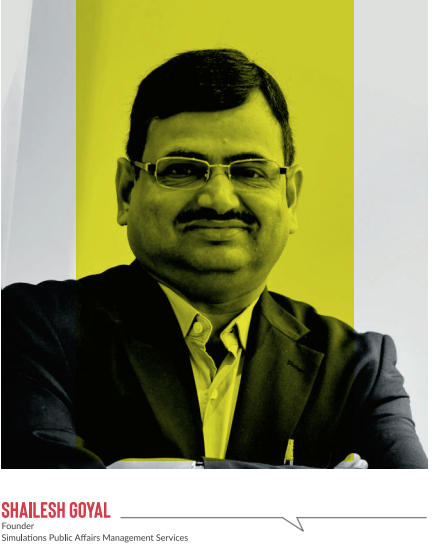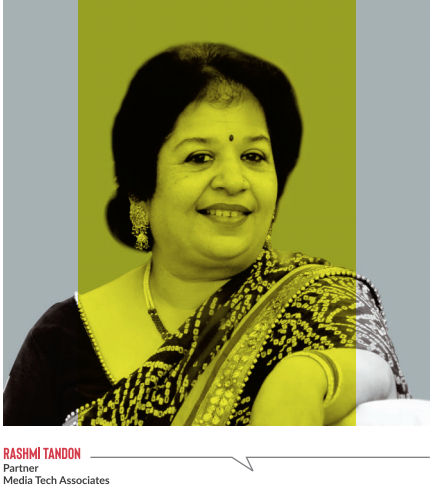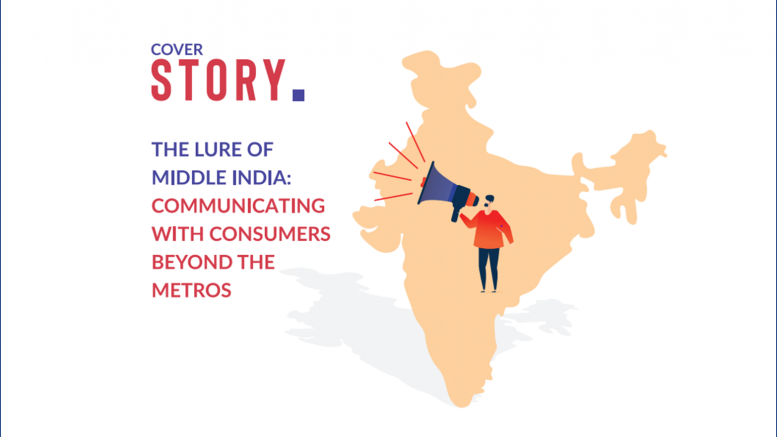With greater numbers comes greater responsibility and there is no way that brands can ignore the huge target audience in Middle India. There is a visible increase in number of consumers from tier 2, 3 & 4 cities. How are brands tackling this shifting landscape? Our senior editor, Shree Lahiri speaks with some experts to get a grip on the lay of the land.
They say that real wealth of India lies in its villages. Travelling back in time to Mahatma Gandhi’s comment, “If the village perishes, India will perish too”; it was prophetic indeed, and it is significant that the importance of Middle India has now swung into the spotlight. Statistics support this too – nearly 70% of the country’s population lives in rural areas. To be precise, according to the last census (2011) the rural–urban distribution is 68.84% and 31.16% respectively. Plus, rural development is considered a key parameter in India’s growth and prosperity.
Well, with greater numbers comes greater responsibility and there is no way that brands can ignore this target audience. How are brands tackling this shifting landscape? With the onset of digital era, consumers from villages have their own circle of aspirations. And, today, as we are on the election mode, politicians are trying every possible way to cater to the appeal of land beyond the metros.
In a competitive scenario and demanding business environment like this, how is Public Relations capturing rural markets in their communication strategies?
The rules of the game are dynamic
 Brands and especially PR professionals need to understand that the rules of game are different when it comes to rural markets, especially in India, where diversity rules. Additionally, the rural environment is vastly different from the urban and therefore communication to potential customers requires a specialised and integrated approach. Without experience, exposure and expertise in understanding the rural game, it is definitely challenging to devise a strategy effectively.
Brands and especially PR professionals need to understand that the rules of game are different when it comes to rural markets, especially in India, where diversity rules. Additionally, the rural environment is vastly different from the urban and therefore communication to potential customers requires a specialised and integrated approach. Without experience, exposure and expertise in understanding the rural game, it is definitely challenging to devise a strategy effectively.
PR practitioners need to innovate exclusively for rural consumers because the values and sensitivities of the rural audiences are a stark contrast to that of their urban counterparts.
Has the shift has happened today, in terms of businesses addressing Middle India?
India’s rural markets have been offering outstanding growth opportunities for global as well as local companies to experiment with their marketing strategies. Making further inroads into the Indian markets for increase in market share and brand recall requires developing of insightful (read customised) product innovation, packaging, marketing and ancillary activities to capture rural loyalty. Even a leading electronics brand like LG could not help but develop a ‘LG Rural Television’ called ‘Sampoorna’, to address area-specific consumer needs. It launched its DTH enabled TVs and swept markets that had poor networks in cable and satellite connections. Now, that was a masterstroke when it comes to offering customised solutions. All the experts were in unison with the fact that the shift has definitely taken place.
The consumer base in this area is highly motivated to spend. There has been an evolution in consumer behavior and spending patterns due to their rising incomes, mobile penetration and data connectivity. This is alongside developments affecting their attitude and consumption pattern which lead the way for businesses.
– Deepa Sridhar, Director, Corporate Communications and CNN Marketing (South Asia), Turner
Shailesh Goyal, Founder, Simulations Public Affairs Management Services observes – “With metros and mini-metros now saturated and pampered enough with choicest brands and products all over, they are unable to give desired growth. FMCG and all other businesses are thus increasingly focusing now towards Middle India for impetus”.
There was a time when brands did not have any special budgets or special strategies for the rural markets, notes Atul Malikram, Founder, PR 24X7 and adds, “but in the last two decades things have really changed. Now brands understand the importance of the rural markets and hire specialised teams to take care of these markets”. Also, the communication, packaging, placements of the products and one-to-one connect with the consumers has increased. One can clearly see that the sharp bias that used to exist 20 or 30 years ago between urban and rural is no longer present.
Brands have become more sensitive. It’s a do-or-die situation. “All brands realise that in order to sustain growth, they need to address the consumers in Middle India,” says Rashmi Tandon, Partner, Media Tech Associates. The big city/metro consumer has experienced all brands and is somewhat is jaded …nothing excites them unless really innovative and exotic. It is the consumer residing in Tier 2 and Tier 3 cities, who is going to drive the growth and they are the ones who are now being targeted with marketing activities, PR, advertising and the like.
Effectively, has the relationship taken a new turn – between brands and consumers in Middle India?
 Given their unique dynamics, an “urban” communications approach will not hold well in tier 2 markets. And because the values and sensitivities of the rural audiences are a stark contrast to that of their urban counterparts, PR practitioners need to innovate exclusively for rural consumers and go that extra mile.
Given their unique dynamics, an “urban” communications approach will not hold well in tier 2 markets. And because the values and sensitivities of the rural audiences are a stark contrast to that of their urban counterparts, PR practitioners need to innovate exclusively for rural consumers and go that extra mile.
The relationship between brands and consumers in Middle India has definitely taken a new turn, according to Atul Malikram. Earlier, the Middle India consumer was assumed to be poor with little or no education and limited purchasing power. But now the perception is changing.
With increasing literacy levels and media exposure, people in Middle India are demanding a better lifestyle. Now brands have realised that the small town consumer is as diverse and different as the urban consumer and that they too have the purchasing power that brands are looking for. So, they are looking beyond metros and trying to increase their footprints in Middle India.
It actually comes down to a question of growth. “Brands are now closer to the consumers of Middle India…they need them for their growth stories”, asserts Rashmi Tandon, with total conviction.
With rising aspiration of consumers in the Middle India, coupled with their increasing power to spend, brands are reworking themselves to be available to such target audiences at entry level price points and trigger consumption.
– Shailesh Goyal, Founder, Simulations Public Affairs Management Services
What are the engaging ways followed by marketing communications today in Middle India?
Tools like roadshows, sponsorship of local events (even really small ones which the local distributor or dealer may engage with) and competitions to amplify branding and advertising across the city skyline are being used today. Brands are creating properties in the Middle India local markets which become annual features and have a loyal following.
As Deep Sridhar, Director, Corporate Communications & Marketing, Turner, sees it, the golden rules of engagement are “commitment” and the core mantra of “think regionally, act locally”. It is commitment that creates an emotional connect and this only comes when you think from the customer’s perspective.
The rules are guided by the ‘A’ factor, according to Atul Malikram. The rules of engagement followed by marketing communications today in Middle India are doctored by the following five ‘As’:
- Affordability: Pricing the product sensibly and keeping it affordable is the key to widening one’s customer base in Middle India.
- Accessibility: Making your product accessible to the small town buyer continues to be a pertinent issue. Best solution to this is a good distribution strategy.
- Awareness: Generating awareness about products on offer in middle India is a different ball game altogether. There’s nothing like a live demonstration to win customer confidence.
- Acceptance: Getting people to accept your product depends on the content of your advertisements. Using opinion leaders like local celebrities is another way of gaining acceptance of the audience.
- Association: Joining hands with the local instituition, partnering with them is a sure shot way of guaranteeing success in the rural market.
Another opinion is that companies are following ‘KISS’ strategy (Keep it simple, stupid!), opines Shailesh Goyal. The communications are straight, psychologically or emotionally touching with enhanced access points. ‘No Frill’ offers are served with participative approaches via localised ‘below’ as well ‘above the line’ marketing initiatives to engage the prospective customer base.
Are brands doing enough to reach out to Middle India?
 Interestingly, the rural FMCG market in India is expected to grow at a CAGR of 14.6 per cent between 2016 and 2025 and reach USD 100 billion by 2025. Trying to increase its penetration in rural areas to generate more revenue from rural India are organisations like Patanjali, Dabur, HUL, Britannia, Nestle and so on.
Interestingly, the rural FMCG market in India is expected to grow at a CAGR of 14.6 per cent between 2016 and 2025 and reach USD 100 billion by 2025. Trying to increase its penetration in rural areas to generate more revenue from rural India are organisations like Patanjali, Dabur, HUL, Britannia, Nestle and so on.
The phenomenon began post 2016, and demonetisation and GST has given impetus to it. The urban consumer is spoilt with choices at dream prices, states Shailesh. The volumes have shrunk forcing companies and brands to look beyond tier 1 cities. Advertising, promotions, OOH, PR and digital everything is being used in Tier 2, 3, 4 and rural India.
Brands are expanding wide and deep enough to reach out to the Middle India, according to Deepa Sridhar. They are conducting ethnographic studies, customising content locally, learning the customer’s consumption habits and addressing their needs, besides exploring every available platform to reach out to the Middle India.
Whether it is FMCG or consumer durables, everyone has tapped into these markets as they find more opportunities there and are trying to encash them. But the problems of rural marketing are continuing despite all efforts. The rural marketer faces many challenges. Distribution costs and non-availability of retail outlets are major problems faced by the brands. Many brands, which should have been successful, have failed miserably. This is because most firms try to extend marketing plans that they use in urban areas to the small town markets. The unique consumption patterns, tastes, and needs of the rural consumers should be analysed at the product planning stage so that they match the needs of the rural people.
Communication needs to be a focused and holistic strategy, if brands are ambitious about mapping tier 2 and tier 3 cities and if they desire to delve into the definition of rural consumerism. Engagements happen at different levels, and consumer connect is the need of the hour.
– Rashmi Tandon, Partner, Media Tech Associates
Are brands really doing enough or do they need to do more? That’s the question Rashmi Tandon asks, when she stresses the fact that brands need to penetrate even more, as the market is immense and the real growth will come from there in the future. “Radio and TV are very engaging and powerful vehicles as they have a huge following,” she adds.
What are they ways to improve brand communication?
 Marketers need to communicate the right message to develop the desired mindset among the consumers. The need for focused marketing communications today in Middle India should not be underestimated; the innovation should be carried out within the framework of the 4-R principle: Relevance, Reliability, Reach and Resonance, points out Atul Malikram. If the Indian advertising industry wants to reach out to rural India in an effective and efficient way, it has to relate itself in local colours, customs and modes of communication in order to make itself relevant to the needs and desires of rural consumers. It has to win the trust of the masses by undercutting its own excessive dependency on western styles of advertising. It has to reach out to rural consumers and relate to them, so that it can bring about the desired behavioral changes. Also, it has to find ways to create resonance. The four components share an interdependent relationship with each other.
Marketers need to communicate the right message to develop the desired mindset among the consumers. The need for focused marketing communications today in Middle India should not be underestimated; the innovation should be carried out within the framework of the 4-R principle: Relevance, Reliability, Reach and Resonance, points out Atul Malikram. If the Indian advertising industry wants to reach out to rural India in an effective and efficient way, it has to relate itself in local colours, customs and modes of communication in order to make itself relevant to the needs and desires of rural consumers. It has to win the trust of the masses by undercutting its own excessive dependency on western styles of advertising. It has to reach out to rural consumers and relate to them, so that it can bring about the desired behavioral changes. Also, it has to find ways to create resonance. The four components share an interdependent relationship with each other.
Shailesh Goyal makes an interesting point, as he suggests – ‘CCP’ (Cut, Copy and Paste) way of communication doesn’t work in engaging audiences in Middle India. Regional language and content with national / international tadka using 360-degree promotions connects the consumer and serves best to the aspiration of people of Middle India.
So, logically, marketing strategies would differ to stay valid to the small town consumers. A multi-pronged marketing strategy focusing more on local communication and activation for tier 2 is more suitable, which ensures connect with the local consumers and trade. Brands really need to look into are the rise of Nano Influencers, points out Deepa Sridhar. Brands need to identify them in the local markets within Middle India and collaborate with them. “Therein lies a huge opportunity, for brands to communicate, which currently is untapped,” she emphasises.
Rapid advancement in technology and better connectivity has significantly increased the scope of business in rural geographies and small towns. Many brands are now aggressively focusing on Middle India markets.
– Atul Malikram, Founder, PR 24X7
However, Rashmi Tandon argues that brands need local visibility and availability in order to capture the minds of the target audience. As they say, ‘Jo dikhta hai woh bikta hai ‘- so, brands need to be seen by the target audience.
Success in these regions will depend on innovative marketing strategies, as they witness rapid demographical changes. So, betting big on small town markets is giving big returns today, and it is working!
In the League
Vast opportunities exist – providing PR services in the hinterland, bridging the gap between the major metros and the mini metros. Here are some players who specialise in reaching out to consumers in Tier 2 and Tier 3 cities.
Fuzion PR
Fuzion PR based in Chandigarh, claims to be India’s strongest regional PR firm with a presence even in the smallest of regions of the country. Aiming to become a one-stop solution for all communication for brands across regional India, the company has created an impact in Regional PR, operating across the domains of communication.
****************************************
Media-Tech Associates
Media-Tech Associates is a PR firm which specialises in media relations in Tier 2 cities across states such as Uttar Pradesh, Bihar, Jharkhand, Orissa, Assam and Meghalaya. Additionally, they also undertake work and events in Nepal.
****************************************
PR 24X7 Network
Headquartered at Indore, PR 24×7 Network, has a company philosophy that contributes to “connect and convey”, as they help clients in connecting with their market segments to convey their messages. They have created a benchmark for themselves since their inception in 2006.
****************************************
Quik Relations
Quik Relations is unrivaled in the ability to help clients safeguard their reputation during challenging times. Having a client-focused philosophy that is reflected in their clients’ corporate and brand reputation, Quik Relations has managed many successful campaigns across industries, since its inception in1999.
****************************************
Simulations Public Affairs Management Services
Simulations Public Affairs Management Services, based at Ahmedabad, crafts narratives that build a lasting impression. Offering 360-degree communications solutions, they strategise to ensure that the designed communication creates an impact. Through guided perception-building exercises, they help brands to create brand value.
***************************************






Be the first to comment on "The lure of middle India: Have brands taken up the challenge?"